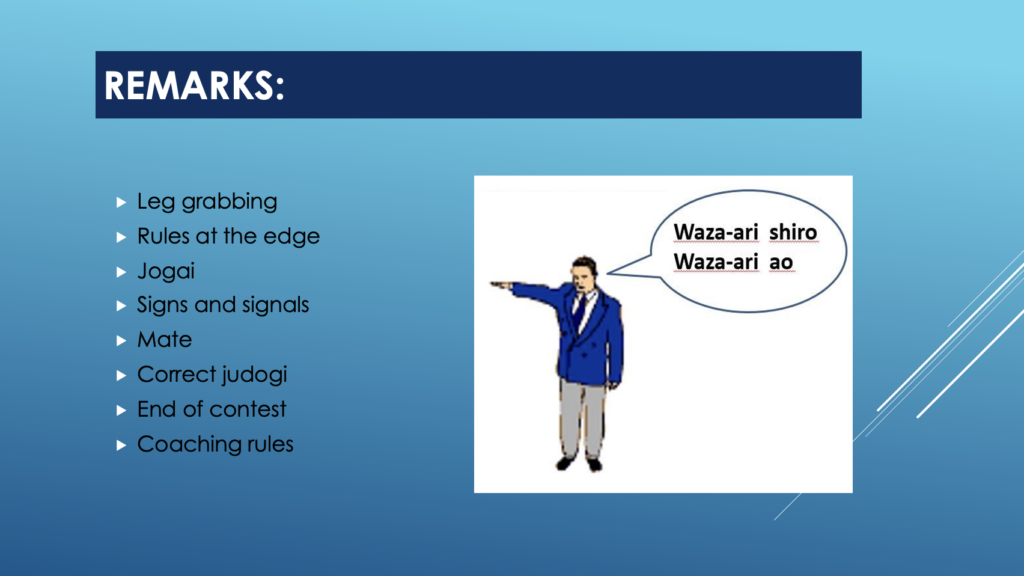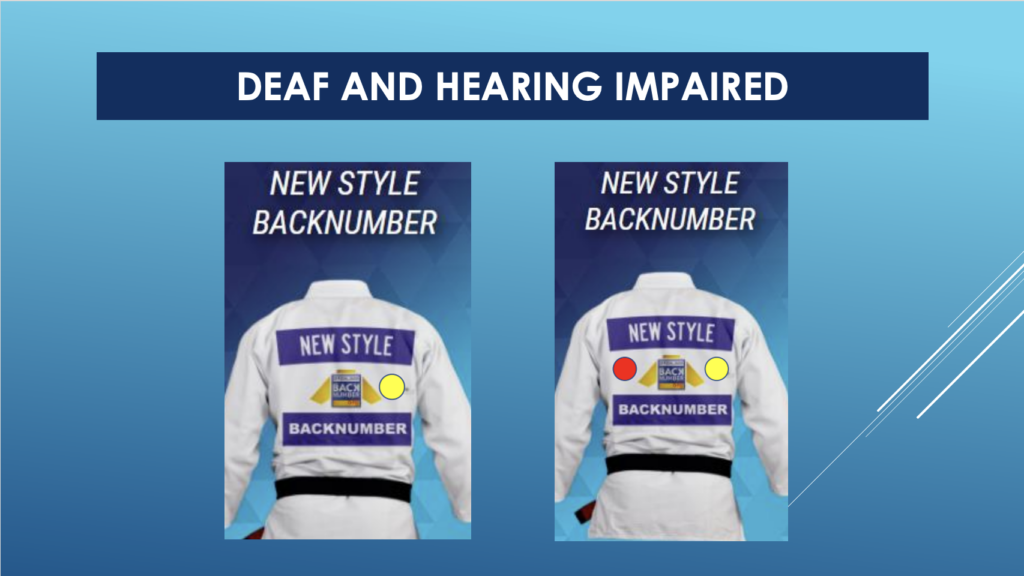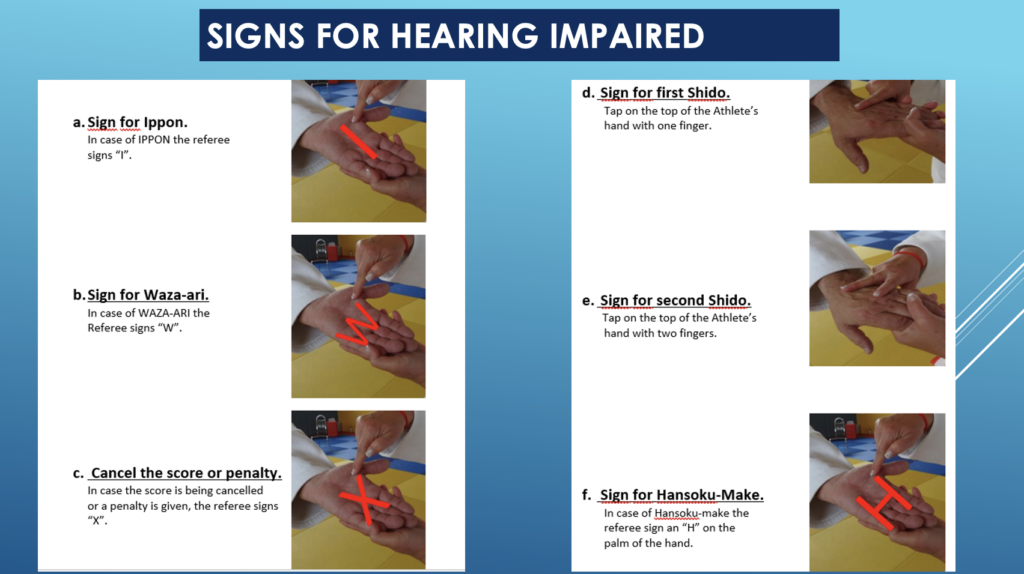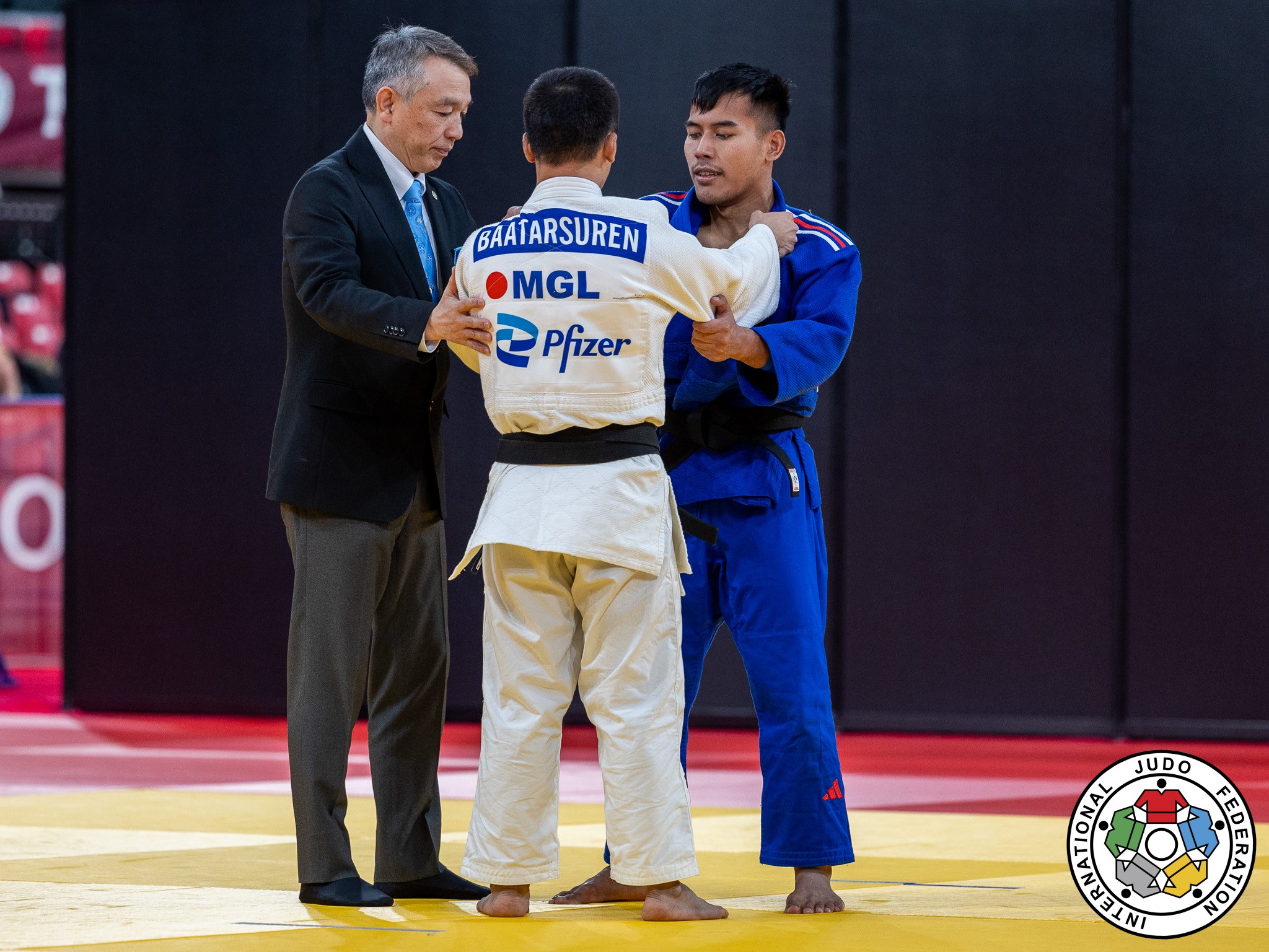A short refereeing meeting took place ahead of the weekend in Heidelberg where the first IBSA Grand Prix of the year is held. Both Referee Directors of IBSA Judo, Mr Kenichi Shoshida and Mr Henk Plugge were at present to deliver the presentation. To support the weekend, Referee supervisors, Cathy Fleury and Giuseppe Maddaloni are both on site. The selection of referees was the outcome of a meeting between IBSA and IJF Refereeing commission, rest assured, an elite line up is ready for action.

The following topics were discussed:
- Understanding the separation of J1 and J2 group. A red circle on the back number indicates the athlete is blind therefore belongs to the J1 group. A red and yellow circle on the back shows that this judoka is both, blind and deaf/hearing impairment. A single yellow circle is an indication of hearing impairment, respectively.
- Escorting judoka in the middle of the contest area: with J1 group, athletes must hold the referee’s elbow to enable support towards the contest area. For J2, in general athletes are able to walk alongside the referee, however, the rule can be amended based on exceptional circumstances. In case of extreme height difference, judoka can hold the referee’s shoulder instead.

- Starting position and kumi kata. Square on starting position, both judoka must take a grip on their preferred side, strictly on the sleeve and lepel. No feeding of the grip into the hand is allowed, first grip applies. In the case where judoka can’t settle with a starting grip, the referee will call out the athlete in the white judogi to take a kumi kata first. The starting grip then will alter between blue and white for the remaining contest. If one still battles to settle, a penalty will be given. Kumi kata is the responsibility of the judoka not the referees.
- Breaking the grip only allowed to make an immediate attack or to take another grip. Everyone must fight with two hands on. If a judoka breaks the grip and implies no attack nor seeking to regain their grips, a penalty will be given.
- Leg grabbing rules falls under the IJF protocol with exceptions to be considered based on each circumstances.
Further topics such as stepping out of the contest area was also discussed. Although he majority of the athletes are blind/visual impaired, there are a handful of judoka with additional hearing impairment. The refereeing committee ensured that all rules are re-examined prior to the event. As per the hearing impairment, several signals were discussed.

Final remarks:
- Don’t touch the fighter when not necessary.
- Signals and announcing in traditional way.
- Always apply all the gestures according to the rules.
- It is important to see all the gestures in case of protest.
- The IJF rules apply for VI judo as well.
- Please understand the limitations of the fighters.
Several video footages were used to support the meeting. At the end, Mr Plugge concluded:
For Paris we won’t change the rules but for Los Angeles, we are thinking of a few changes.
The event will be streamed live online via the IBSA YouTube Channel.
Author: Szandra Szogedi




